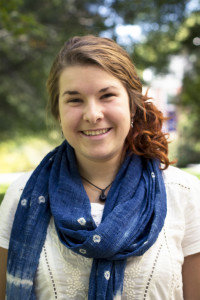It is always challenging to make a movie adaptation of a book, especially one as well revered and cherished as Antoine de Saint-Exupéry’s The Little Prince. Yet director Mark Osborne decided to take on this task, releasing the movie in August of 2016. The result? An overall memorable and innovative film that adheres to the message of the original story while making it relevant for today.
Written as a novella in 1943 in French, The Little Prince expresses the journey of a – you guessed it – little prince from asteroid B-612. He is the only inhabitant of his planet, and in fact, it is so small that once he watched 44 sunsets in a day, simply by scooting his chair forward bit by bit. One day, a rose sprouts on his planet, and they fall in love. After tending to her for a while, the rose’s vanity causes the little prince to leave his home, where he eventually lands on Earth. Here, the little prince encounters an aviator stranded in the Sahara desert after his plane crashed. “Draw me a sheep,” the little prince says to the man.
This unusual interaction, along with the ensuing relationship, causes the aviator to write the story of the little prince. This story, in the words of the aviator is Exupéry’s book, and here is where the movie departs. Done in animation reminiscent of recent Pixar films, it follows the summer of a young girl (voice by Mackenzie Foy) as she prepares for acceptance of a prestigious school. After being declined at their first-choice academy, mother (Rachel McAdams) and daughter up-and-move to a new neighborhood just to be closer to the new school. The mother then introduces the daughter’s Life Plan, a detailed schedule of the little girl’s entire life planned out to the minute. Yet in her micromanaging, the mother didn’t account for the eccentric old man living next door. Before long, the little girl is spending her summer days as all children should – listening to stories, playing outside, and making a new friend. As the carefree days unfold, so does the story of the Little Prince, told to the girl by the old man (voice by Jeff Bridges), who was in fact the Aviator.
Soon the mother discovers this unique friendship and the girl’s ‘reckless abandonment’ from the Life Plan. Attempting to squash this deviation and make up for precious lost time, the girl is forced to return to her studies and books for the last few weeks of summer. While the mother’s obsession with perfecting her daughter’s life is rather over-the-top, the message still comes across. From the soundtrack to the graphics and coloring, it illustrates a case of typical suburban life caste in neat squares in shades of white and gray with closely clipped lawns. Contrasted with the colorful and vibrant home of the Aviator, the cookie-cutter landscape seems to be truly lacking. Be it societal pressures, definitions of success, or a desire for perfection, the viewer can find some way in which to relate to the little girl, or perhaps even the overbearing mother.
Portions of the Little Prince’s story are woven into the main plot and depicted in beautiful stop-motion animation, giving it an overall whimsical and poetic feel. This adaptation does not simply replay the well-loved story of the Little Prince, but depicts a world in which the book bears relevance. A world in which creativity and imagination are embedded in the landscape, where questions are encouraged, and where there is time to tame and be tamed. A world that values relationships across generations and species and planets. A world that is not afraid to love and be loved.
Overall, the film does the original book justice and illustrates a world in which its themes may be lived out. Yes, it is rated PG and some may call it a “kids’ movie,” but it holds as much value for adults as for little ones. In this defining time in American history, it is a good reminder to choose connection over division, to see with the heart. Oh, and it’s also on Netflix.



